Related Research Articles

Locke Craig, an American lawyer and Democratic politician, was the 53rd governor of the U.S. state of North Carolina, serving from 1913 until 1917.
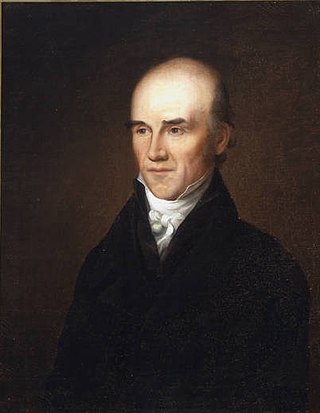
Joseph Caldwell was a U.S. educator, Presbyterian minister, mathematician, and astronomer. He was the first president of the University of North Carolina at Chapel Hill, holding the office from 1804 until 1812, and from 1816 until his death in 1835.

Albert Ernest Radford was an American botanist active in the Southeastern United States. He was best known for his work as senior author of Manual of the Vascular Flora of the Carolinas, the definitive flora for North Carolina and South Carolina.

Coker Arboretum is an arboretum within the North Carolina Botanical Garden on the campus of the University of North Carolina, Chapel Hill, North Carolina. The collection consists of a wide variety of plantings including flowering trees and shrubs as well as bulb and perennial displays. It is open daily without charge.

The North Carolina Botanical Garden is a botanical garden operated by the University of North Carolina at Chapel Hill in Chapel Hill, North Carolina. The primary goal of the Garden is to research, catalog, and promote the native plant species of North Carolina.
The William Lanier Hunt Arboretum is an arboretum and natural area that forms part of the North Carolina Botanical Garden. It is operated by the University of North Carolina at Chapel Hill, Old Mason Farm Road, Chapel Hill, North Carolina. The arboretum is private and not open to the public. Arboretum property was donated by William Lanier Hunt between the 1960s and the 1990s in order to protect natural areas and conserve woody plants of the southeastern United States. It includes several rhododendron bluffs in a gorge along Morgan Creek.
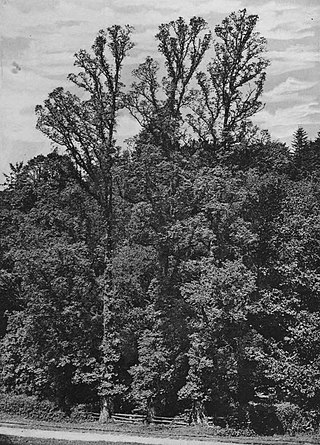
The field elm cultivar Ulmus minor 'Stricta', known as Cornish elm, was commonly found in South West England, Brittany, and south-west Ireland, until the arrival of Dutch elm disease in the late 1960s. The origin of Cornish elm in the south-west of Britain remains a matter of contention. It is commonly assumed to have been introduced from Brittany. It is also considered possible that the tree may have survived the ice ages on lands to the south of Cornwall long since lost to the sea. Henry thought it "probably native in the south of Ireland". Dr Max Coleman of Royal Botanic Garden Edinburgh, arguing in his 2002 paper on British elms that there was no clear distinction between species and subspecies, suggested that known or suspected clones of Ulmus minor, once cultivated and named, should be treated as cultivars, preferred the designation U. minor 'Stricta' to Ulmus minor var. stricta. The DNA of 'Stricta' has been investigated and the cultivar is now known to be a clone.
William Chambers Coker was an American botanist and mycologist.

Rogers McVaugh was a research professor of botany and the UNC Herbarium's curator of Mexican plants. He was also Adjunct Research Scientist of the Hunt Institute in Carnegie Mellon University and a Professor Emeritus of botany in the University of Michigan, Ann Arbor.
The Botanical Society of America (BSA) represents professional and amateur botanists, researchers, educators and students in over 80 countries of the world. It functions as a United States nonprofit 501(c)(3) membership society.
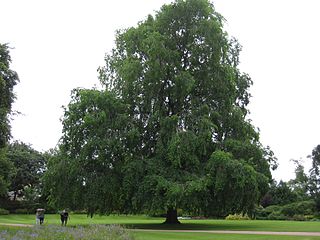
Ulmus × hollandica 'Wentworthii Pendula', commonly known as the Wentworth Elm or Wentworth Weeping Elm, is a cultivar with a distinctive weeping habit that appears to have been introduced to cultivation towards the end of the 19th century. The tree is not mentioned in either Elwes and Henry's or Bean's classic works on British trees. The earliest known references are Dutch and German, the first by de Vos in Handboek tot de praktische kennis der voornaamste boomen (1890). At about the same time, the tree was offered for sale by the Späth nursery of Berlin as Ulmus Wentworthi pendulaHort.. The 'Hort.' in Späth's 1890 catalogue, without his customary label "new", confirms that the tree was by then in nurseries as a horticultural elm. De Vos, writing in 1889, states that the Supplement to Volume 1 includes entries announced since the main volume in 1887, putting the date of introduction between 1887 and 1889.

George Francis Atkinson was an American botanist and mycologist.
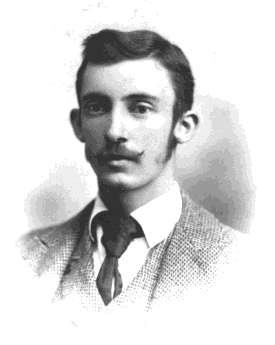
William Willard Ashe was an American forester and botanist. He was known as a prolific collector of plant specimens and an early proponent of conservationism in the Southern United States.
Leland Shanor was an American mycologist and botanist. He married mycologist Mary Williams Ward Shanor on June 20, 1940, in Burgaw, North Carolina. They had two sons. Charles was born in 1946 and Paul in 1949. Outside of their studies in mycology, Leland and Mary Shanor were both heavily involved in real estate. They are both buried in Rockfish Presbyterian Church Cemetery in Wallace, Duplin County, North Carolina.
Alan Stuart Weakley is an American botanist with expertise in the systematics, ecology, and conservation of the flora of the Southeastern United States. Weakley is the director of the UNC Herbarium at the North Carolina Botanical Garden and an adjunct associate professor at the University of North Carolina at Chapel Hill. He is the author of Flora of the Southern & Mid-Atlantic States, a manual covering the approximately 7000 vascular plants found in the Southeastern United States.
Alma Holland Beers (1892-1974) was an American botanist known for being the first woman botanist at the University of North Carolina at Chapel Hill, including her work plant collecting, co-authoring multiple publications, and creating botanical illustrations. The standard author abbreviation Beers is used to indicate this person as the author when citing a botanical name.
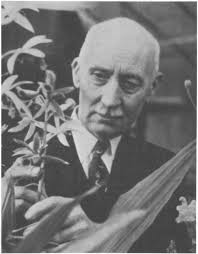
Hugo Leander Blomquist was a Swedish-born American botanist. His well rounded expertise encompassed fungi, bacteria, bryophytes, algae, grasses, and ferns. The standard author abbreviation H.L.Blomq. is used to indicate this person as the author when citing a botanical name.

William Meade Prince was an American magazine illustrator of the 1920s and 1930s. The William Meade Prince and Lillian Hughes Prince Papers form part of the Southern Historical Collection of the University of North Carolina. His artistic estate was donated to the permanent collection of the Ackland Art Museum in 1962.
Roberta Cowing Throckmorton was an American artist, employed by the U.S. Department of Agriculture (USDA).
Wilhelmena Katherine Fuller "Mena" Webb was an American writer and editor. She taught writing classes at the University of North Carolina at Chapel Hill's Evening College, was a columnist and society editor at The Herald-Sun, a novelist, and the author of a biography on the industrialist Julian Carr.